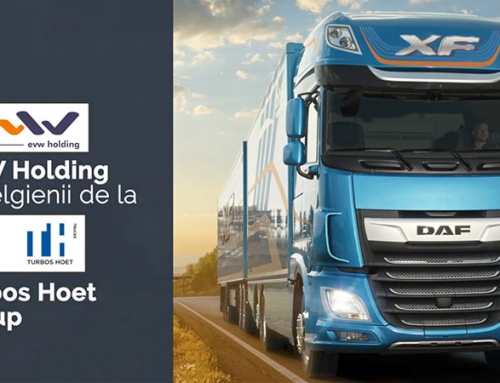Companies the business of which involves the use of a fleet of motor vehicles should pay more attention to the conditions in which they can deduct 100% of the expenditure on motor vehicles when calculating their corporate tax. In practice, the tax audits identified multiple situations in which companies did not correctly apply the legal provisions in question or did not provide the necessary documentation to justify the right to deduct in full the expenses for vehicles. In such situations, the tax authorities have established additional corporate tax and related late payments – in the context of a tax inspection covering several tax years and for companies owning / using a large number of motor vehicles, the additional amounts set by tax authorities may be significant.
Legal Provisions
According to Article 25, paragraph (3), section l) of the Tax Code, companies may deduct in the calculation of corporate tax “50% of the expenses related to motorized road vehicles not exclusively used for economic activity, with a maximum total weight not exceeding 3,500 kg and not having more than 9 passenger seats, including the driver’s seat, owned or operated by the taxpayer. These costs are fully deductible for those situations in which vehicles fall into any of the following categories:
1. Vehicles used exclusively for emergency services, security and protection services and courier services;
2. Vehicles used by sales and purchasing agents;
3. Vehicles used for the carriage of passengers, including taxi services;
4. Vehicles used for the provision of paid services, including for hire to others or for training by drivers’ schools;
5. Vehicles used as merchandise for commercial purposes.”
Normele metodologice de aplicare a Codului fiscal explicitează prevederile Codului fiscal enunțate de mai sus, prin menționarea modalității prin care se poate justifica utilizarea vehiculelor în scopul deductibilității integrale: “justificarea utilizării vehiculelor, în sensul acordării deductibilității integrale la calculul rezultatului fiscal, se efectuează pe baza documentelor financiar-contabile și prin întocmirea foii de parcurs care trebuie să cuprindă cel puțin următoarele informații: categoria de vehicul utilizat, scopul și locul deplasării, kilometrii parcurși, norma proprie de consum carburant pe kilometru parcurs.”
he methodological rules for the application of the Tax Code explain the provisions of the Tax Code outlined above, by specifying how to justify the use of vehicles for the purpose of full deductibility: “the justification for the use of vehicles for the purpose of granting full deductibility to the calculation of the tax result is based on financial and accounting documents and by drawing up a roadmap which shall include at least the following information: the category of vehicle used, the purpose and location of the journey, mileage, the own standard of fuel consumption per kilometer.”
Moreover, the Methodological Rules specifically specify that: “Expenditure on motorized road vehicles subject to tax constraint includes expenditure directly attributable to a vehicle, such as: local taxes, compulsory motor third party liability insurance, periodic technical inspections, vigniette, rents, non-deductible part of value added tax, interests, commissions, exchange rate differences recorded as a result of contracts other than leases.”
Practical aspects
In view of the mistakes encountered in practice in the interpretation and effective application of the legal provisions outlined above, we highlight the most important aspects to be considered when determining the tax treatment applicable to the costs of motor vehicles owned or operated by companies:
1. Firstly, the Tax Code mentions that the 50% limitation of costs applies to motor vehicles which are not exclusively used for economic activity. Therefore, a deduction of 100% applies only to cars used exclusively for the business of the company.
If, for example, the company offers the possibility for its employees to travel with the company’s vehicles on the tour-return journey from the workplace to their home, then it is considered that the vehicles are also used for personal purposes by the employees of the company and therefore the 50% limit should be applied.
2. Even for situations where the law provides for a full deduction of car costs, companies must draw up roadmaps – an essential condition specified by the law. Increased attention should be paid to items that are included in the roadmaps. Companies often fail to meet the minimum requirements imposed by tax legislation.
The roadmaps must include the following information:
- the category of vehicle used,
- the purpose and place of movement,
- kilometers traveled,
- own standard of fuel consumption per kilometer.
3. There are situations in which companies wrongly calculate the 50% deduction of car costs in the calculation of the corporate tax – the most frequently encountered case is when related non-deductible VAT is not taken into account. For example, a company carries motor vehicle expenses in the amount of RON 1,000 and related VAT in the amount of RON 190. Firstly, the limited VAT deduction is applied, meaning that RON 95 (50% x RON 190) is non-deductible VAT. Therefore, from the corporate tax point of view, the company will not apply 50% to RON 1,000, but will apply 50% to RON 1,095.
4. The limitation of deductibility does not apply only to fuel expenses – any expenditure incurred on a vehicle not used solely for the purpose of carrying on the business of the company must be subject to the limitation on deductibility (compulsory motor third party liability insurance, periodic technical inspections, vignettes, rents, VAT, car service, leasing instalment, unfavorable exchange rate fluctuations, etc. For this purpose, the accounting records of the company must allow the extraction of data on the expenses attributable to each individual vehicle.
5. Expenditure on depreciation is not subject to the limitation of deductibility analyzed above (being limited to RON 1,500 / month / vehicle, with certain exceptions specified by law).
6. If limited deduction (50%), applies, proof of vehicle use should not be made, so no roadmaps should be drawn up.
In conclusion, when the company decides to apply a tax treatment to the vehicles owned or used by it, it is necessary to consider the conditions for the deduction of such expenses so as to eliminate the risk of applying a wrong treatment which would could lead to the establishment of an additional corporate tax, as well as interest and late payment penalties.
Article published firstly on Avocatnet.ro.



Suntem soluția eficientă în oferirea de servicii complexe de evaluare și consultanță pentru clienții corporativi. Echipa noastră de specialiști asistă clienții în soluționarea diverselor spețe cu impact fiscal.






